A team of volunteers from the Edinburgh Decorative and Fine Art Society (EDFAS) have been giving their time freely for a number of years to make storage improvements for the textile collections at National Museums Scotland.
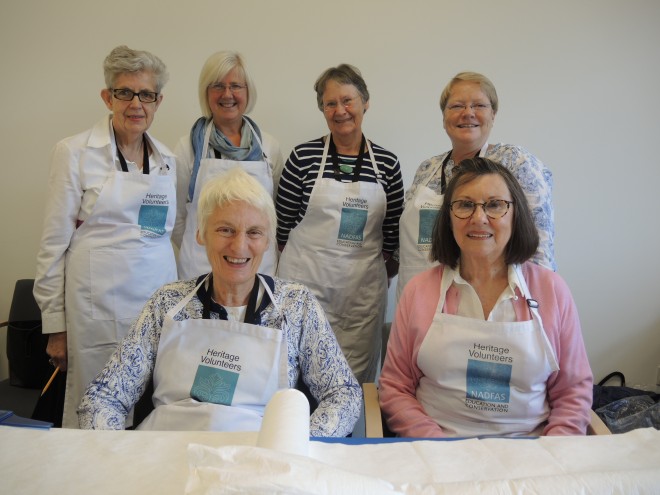
Our EDFAS volunteer story began with the very successful Jean Muir exhibition in 2009. The exhibition inspired EDFAS to offer to help with the costume collection in any way possible, and in collaboration with the curator it was decided that the storage of this very important acquisition was the place to start. The collection consists of the Jean Muir archive, and includes many garments that needed to be hung on coathangers for storage. Everyday hangers either provide too little support, like the thin wire ones, or are made from materials like plastic or non-museum standard padding which could adversely affect the textiles in storage. The volunteers began by making a conservation-grade padded hanger for every garment. Each varnished wooden coathanger was first padded with polyester wadding and then covered with an outer layer of washed cotton stockinette. These padded hangers provide good support for the shoulder area of the garment, and help prevent damaging creases from forming. The volunteers also made a garment bag to cover each object, which helps to protect the garment from dust and during handling. A laminated colour photo with each object’s unique museum number is tied to the side of each bag, making it quick and easy to identify the object inside. The EDFAS team were involved in taking the photos of the objects and, following a handling training session with the textile conservator, putting them onto the hangers. The volunteers really enjoyed this aspect of the project, particularly as a number of them were owners of Jean Muir garments!
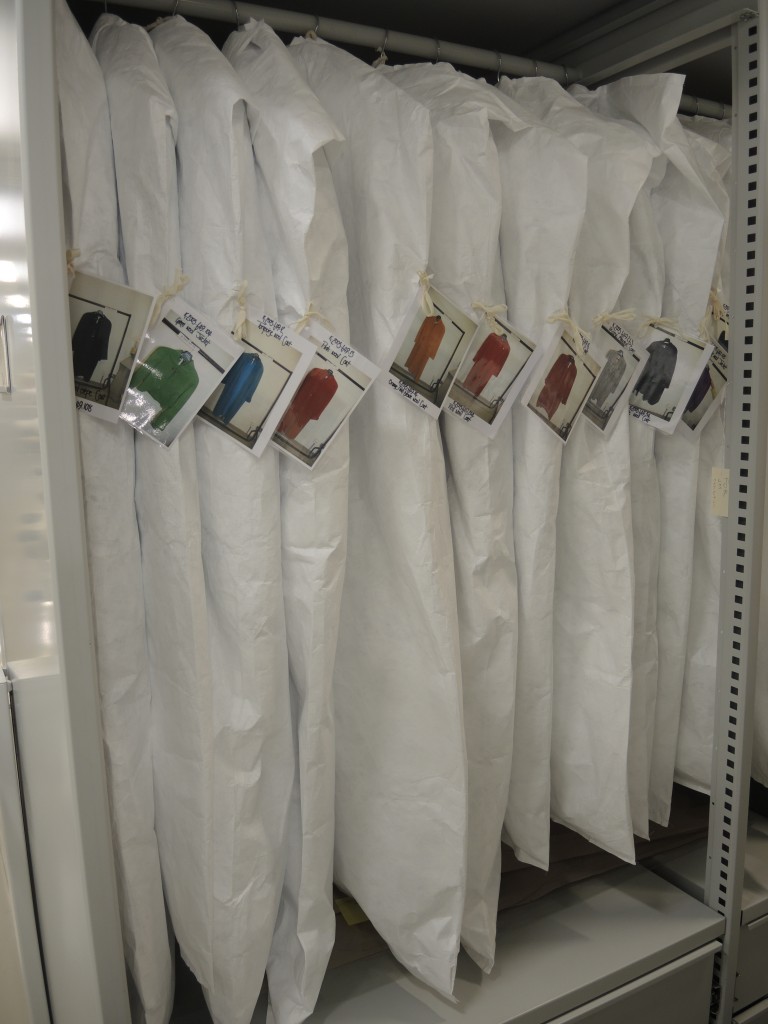
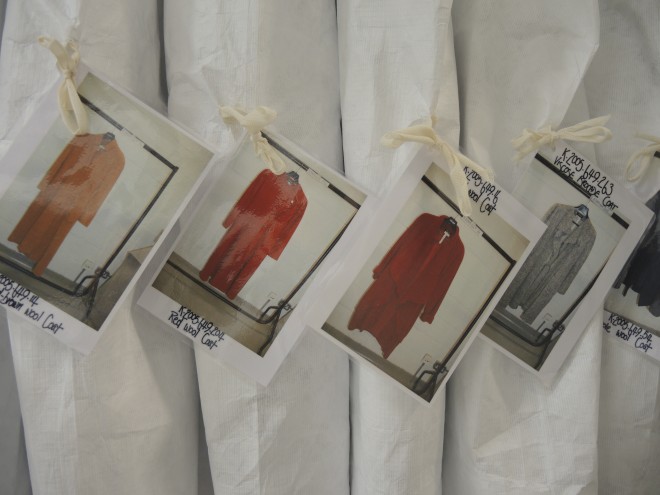
Following the success of this project, the volunteers continued to make a variety of padded hangers, building up a stock for use in the stores. An area where major improvements have been made is the Charles Stewart collection, as you can see from the pictures. The volunteers again enjoyed the interaction with the garments, working with textile conservators to select the correct shape of coathanger for each object.
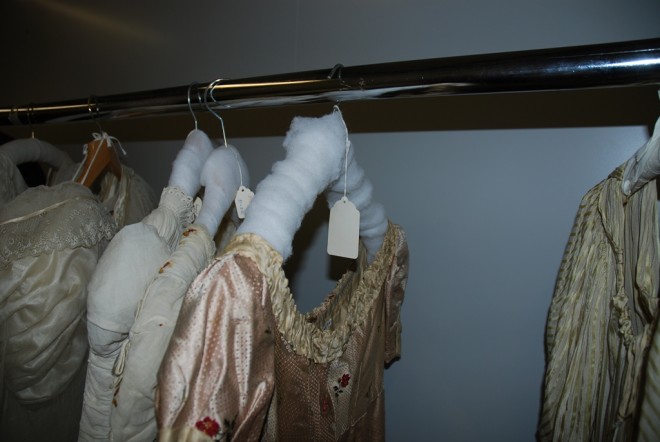
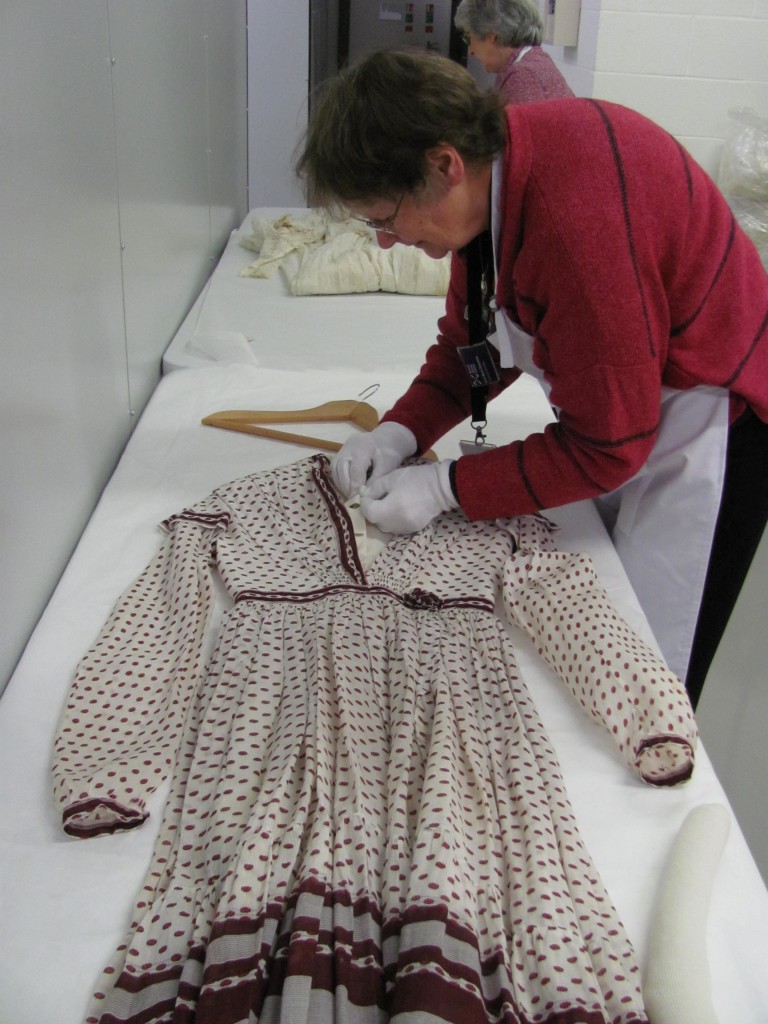
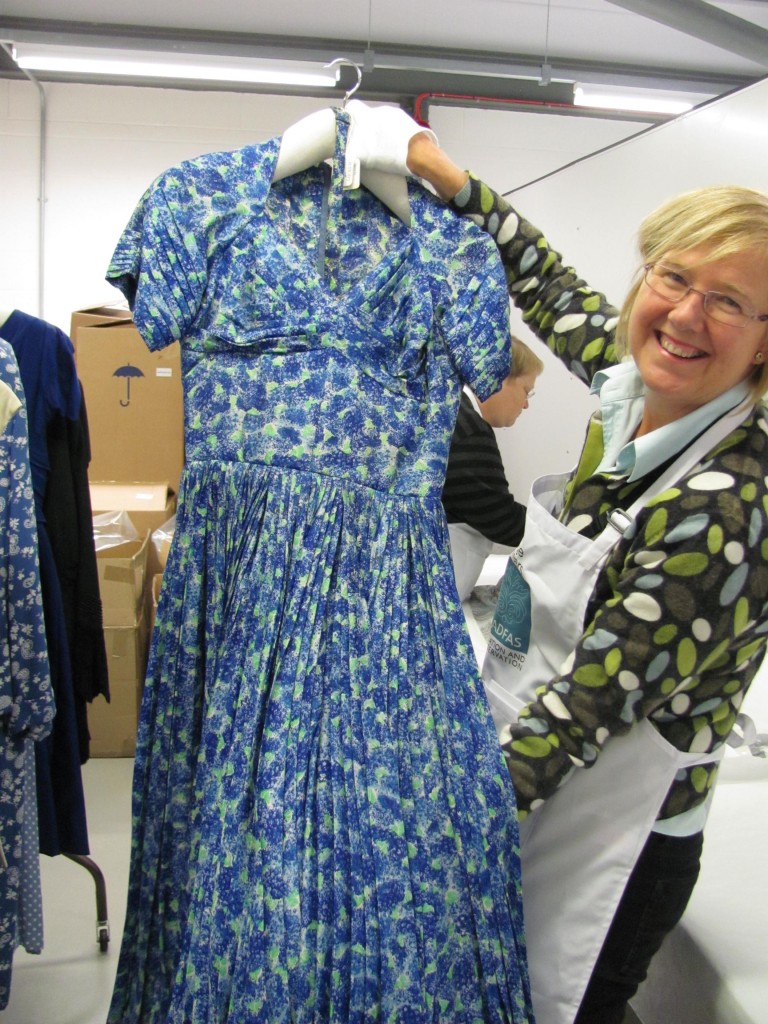
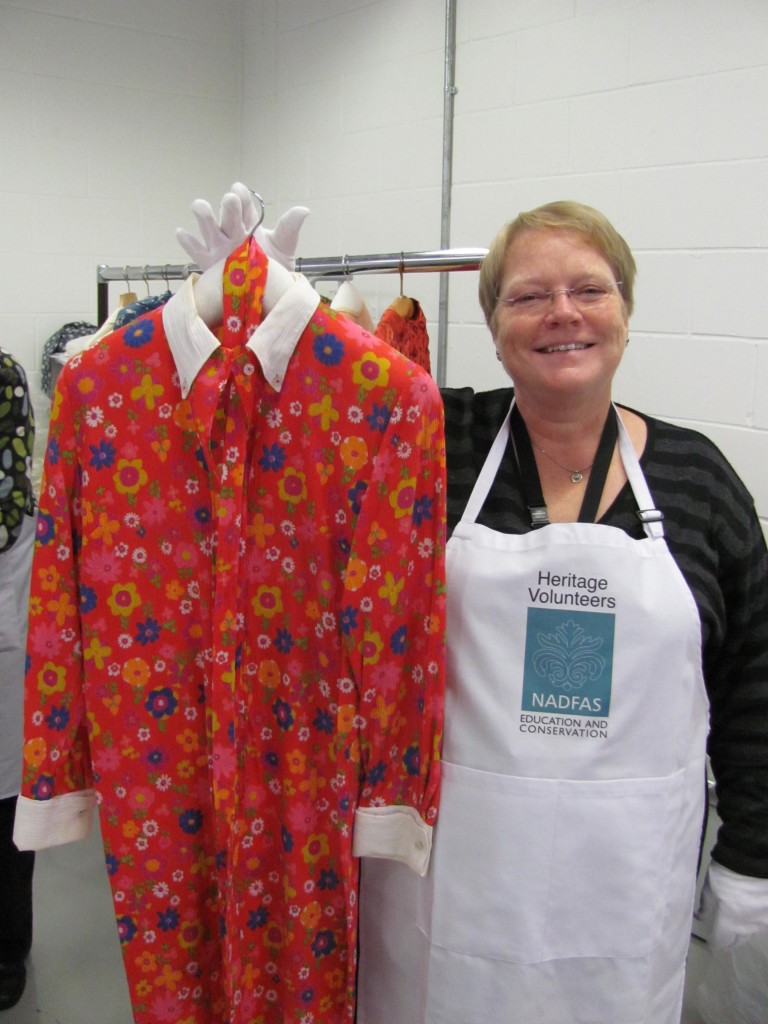
As news spread of their abilities, the EDFAS team started to branch out into other projects for different parts of the collections. They made ‘pillows’ of Tyvek filled with Polystyrene beads in a range of sizes, which are used by our Artefact conservators for packing objects for storage and transport – although filling the bags with the beads is probably their least favourite job as the beads tend to get everywhere! This project then snowballed as well, with a request from our geological conservator for bags that could be filled with sand and then used to support specimens while treatment is carried out. More recently, our EDFAS volunteers made silver safe bags for storing cleaned silver objects. These bags are made of Pacific Silver Cloth, a soft brushed cotton imbued with silver particles which tarnish preferentially to the silver object stored inside, reducing its need for cleaning over very extensive periods of time.
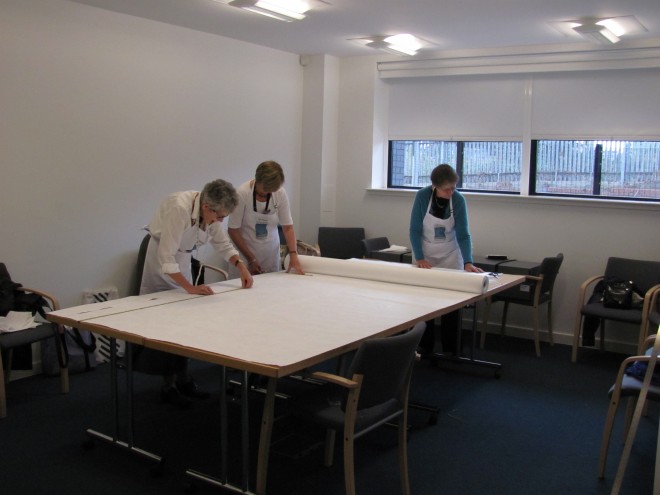
Storage improvements were also made for a collection of 19th-century Japanese woodblock-printed books. Traditional Japanese books were made of very soft paper with flexible covers and, as they are not stiff enough to stand on a shelf, they must be stored laid flat. The existing storage conditions, lying flat in trays, are good, but handling these soft, ‘floppy’ objects was problematic. To address this, the volunteers made acid-free card support covers based on a prototype provided by the curator, with minor modifications by the paper conservator. These covers function rather like slip-cases in the West, helping to store multiple volumes of one title together and permitting safe handling into and out of the storage trays.
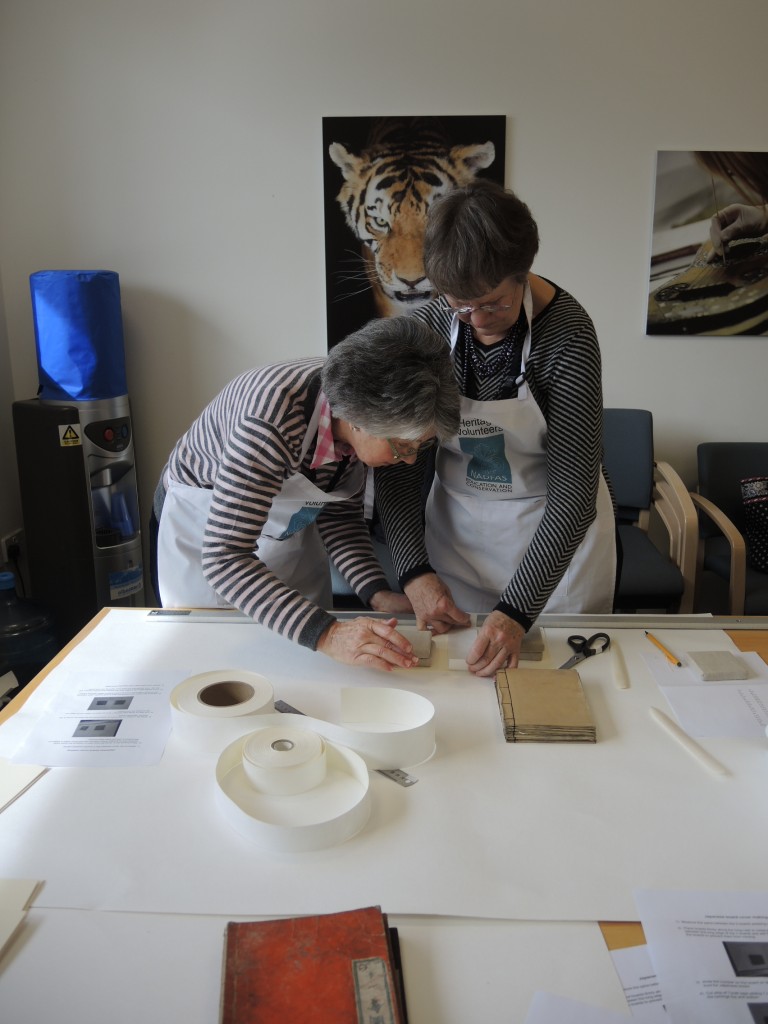

More recently, the team started working on improvements to the storage of our glove collection. Previously the gloves were layered into metal storage drawers with acid-free tissue, in a compact roller storage system. This method did not provide good support for the gloves, made access difficult, and meant the objects were difficult to move with lots of handling involved.
We decided that shallow trays made of conservation-grade materials would solve these problems. The volunteers assembled two sizes of trays, which are simple structures of double walled acid-free card with a top cover of Tyvek and a raised edge of Plastazote, meaning they can be stacked in the drawers making good use of the space available. Some improvements have been made since the project began; for example, the Plastazote strips are now pre-cut by the supplier which gives a better finish and saves time, and small cotton tape ‘handles’ enable the trays to be easily lifted out of the metal drawers.
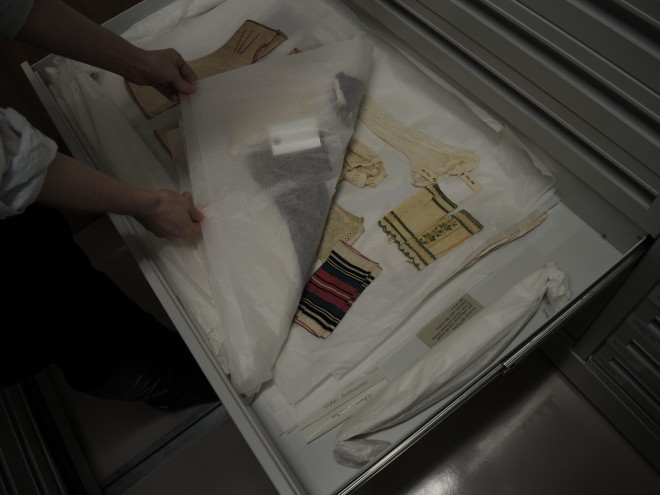
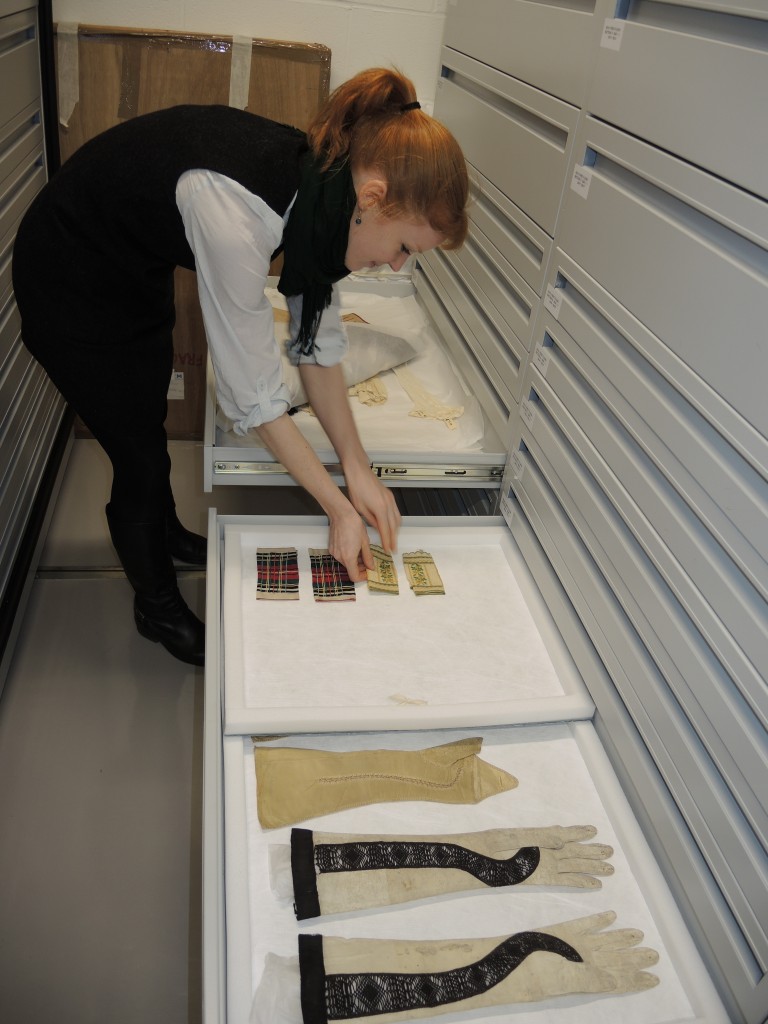
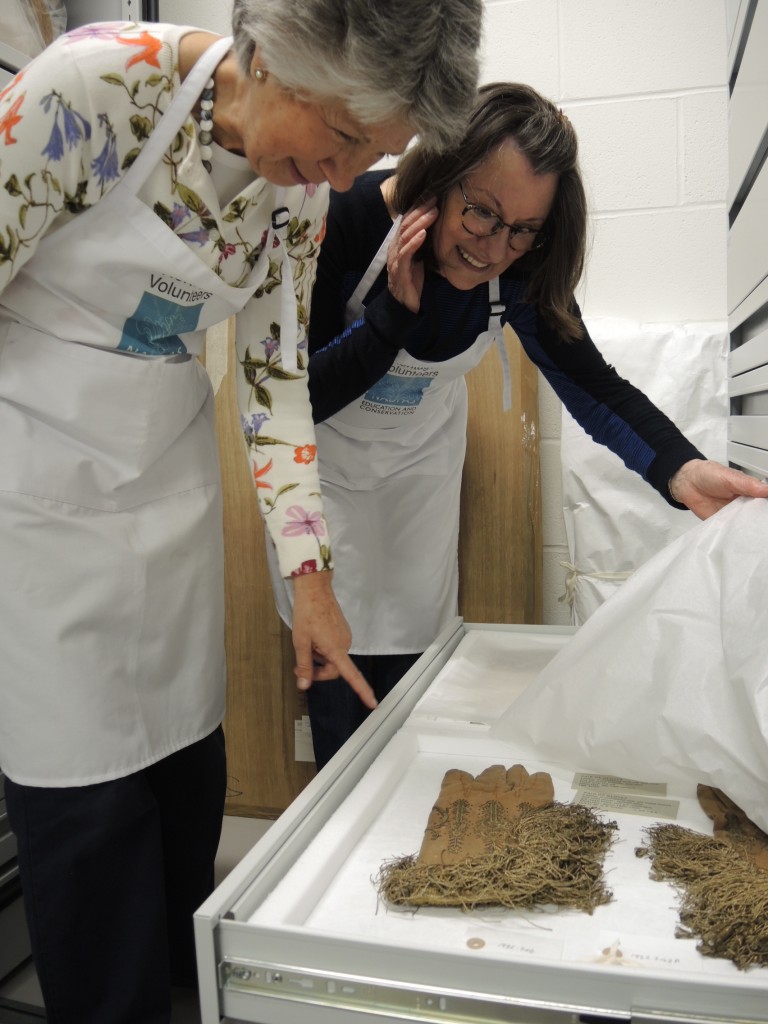
The EDFAS volunteers are now like a well-oiled machine. With each new task, they organise themselves into groups: those who sew, those who measure and cut, those who use the glue gun and so on. The input required from me as their ‘manager’ has significantly reduced over the years, as we have all become more familiar with what is required and what works for everyone. The museum and its collections benefit from the time given by a dedicated and fun group of people, who make significant storage improvements for the textile collections. Their reputation has spread and the latest request for their time is from our furniture curator, who would like covers for the stored upholstered furniture… So watch this space for an update!
My thanks go to Jen, Dorothy, Margaret, Betty, Carol, Midge, Lesley, Rie and Irene for all their efforts and for being such a pleasure to work with.
